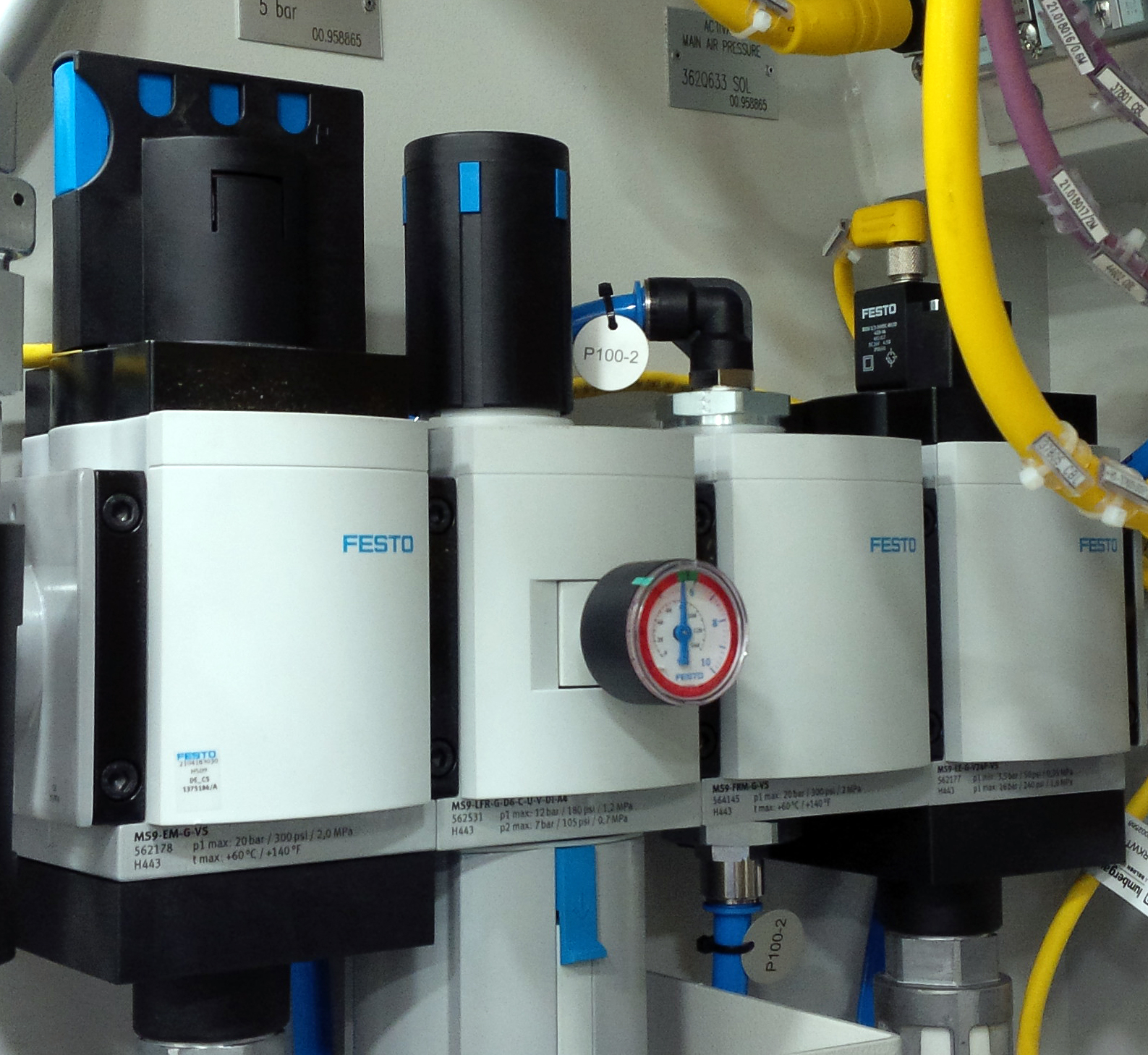Pneumatic SafetyWork on the pneumatic system is to be carried out only by suitably trained persons; applicable regulations and codes of practice must be adhered to. The compressed air maintenance unit of the machine is equipped with a shutoff/lockout valve. The compressed air from the site supply can be shut off by manually operating this shutoff valve. If damage such as abrasion or leaks are detected on pressure hoses, pressure lines and connections, immediately shut down the machine, even if the defects are minor. Only put the machine back into operation after the fault has been rectified. Fluids escaping at high pressure can cause injury, explosion or fire.
Releasing pressureBefore disconnecting any line or removing a control or drive unit, the system must be relieved from pressure. The pressure gauges should be checked to ensure that there is no residual pressure in the system. Regular inspection of pressure hoses and fittingsThe integrity of pressure lines and connectors must be checked at regular intervals and replaced even if only slight damage is apparent. Fluids escaping under high pressure pose a risk of injury, explosion and fire. Any leaks and damages to hoses and pressure lines must therefore be rectified immediately. Pressure hoses must be replaced regularly according to applicable regulations. Correct connectionPneumatic lines must be routed and connected correctly. The correct connectors must be used for connecting lines. All fittings, as well as the length and quality of the hoses must comply with technical requirements. |
